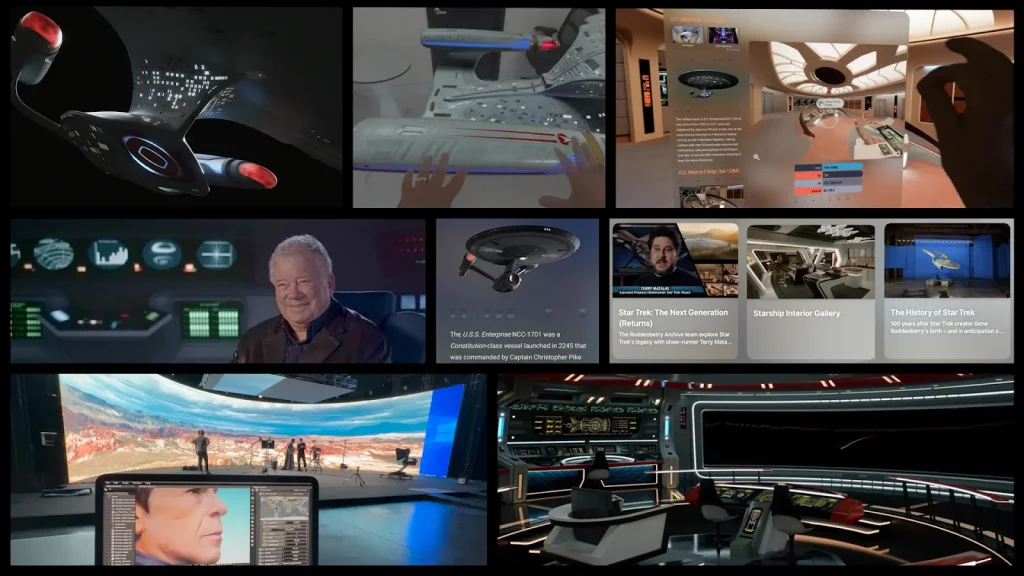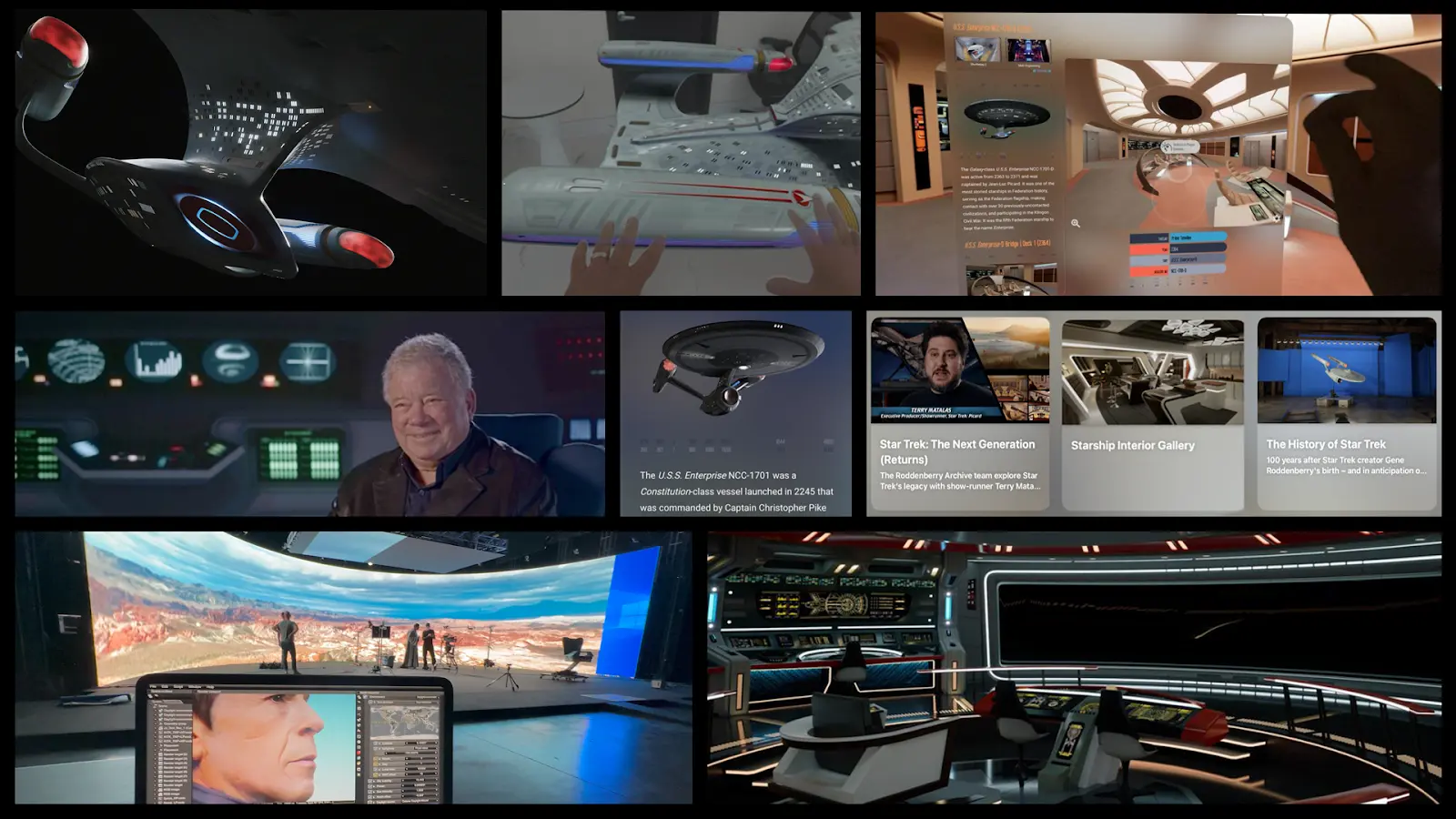
The Roddenberry Archive is a collaboration between OTOY, The Roddenberry Estate, and iconic “Star Trek” artists Denise Okuda, Mike Okuda, and Daren Docterman to preserve Gene Roddeberry’s legacy in all media, but especially the history and cultural contribution of all eras of “Star Trek”. In a multi-pronged approach, the team is documenting “Star Trek” through interviews with cast and crew members, 3D scanning original props, costumes, and sets, making walk-through digital recreations of the sets from the series and movies, and producing documentary featurettes.
VAD supervisor Mark Spatny, senior hard surface artist Donny Versiga, and motion graphics artist Andrew Jarvis, are a few of the members creating this experience. Check out how they are using Adobe Creative Cloud to keep Gene’s legacy alive.
You can check out this project and immerse yourself into the world of “Star Trek” here.
How did you first get into VFX design? What drew you to it?
Spatny: I started working in live theater in the late ‘80s in Los Angeles as a set and lighting designer, and in the early ‘90s began using architectural previz software to design my scenery. I soon found that I enjoyed doing computer graphics as much as the physical theater production, so I transitioned into visual effects where I can combine all those skills. I have since worked on more than 50 TV series and films on-set and in post-production as a VFX supervisor and producer, specializing in both action/stunt/superhero VFX and complex set extensions.
Versiga: I got my start back in 2000 when I was 16 years old, creating my own custom levels in first-person video games like “Doom” and “Dark Forces”. At first it was just rearranging pre-existing assets in a level map, but soon I learned the basics of modeling, texturing, and lighting to achieve more customized results. After a year or so of being active in the video game modding community, I realized that I could merge this newfound hobby with my lifelong love of “Star Trek” by bringing to life my favorite “Trek” sets in a 3D digital world via real-time rendering.
Jarvis: I really took the long way around. I graduated with a degree in philosophy and psychology and started working as a cashier at a coffee shop doing web design jobs on the side. But each job was a little better than the last, and in my free time I was learning Adobe After Effects, 3D animation and ZBrush sculpting. One day a friend of mine met someone who did screen graphics for film and television, he gave me their number, and I never looked back.
What was the inspiration behind the VFX work on this project? What were you trying to achieve?
Spatny: Space-themed TV shows have always been my passion ever since I was a kid — “Star Trek”, “Battlestar Galactica”, “Lost in Space”, “Stargate”, “Doctor Who”, and anime shows like “Space Battleship Yamato” and “Macross”. In 2018, as a member of the Television Academy board, I helped champion giving the “Star Trek” franchise the Academy’s Governors Award Emmy. So, I’m super excited to finally be working in that genre, helping preserve the history of a show I’ve loved for 50 years.
Versiga: My goal on the Roddenberry Archive is to not only simply create CG replicas of the sets and props of “Star Trek”, but also to immerse the end users in a highly detailed and exceptionally immersive virtual tour of some of the most beloved ships and settings of the fictional universe. I want users to feel like they are actually stepping onboard the “Enterprise” via the comfort of their digital devices, in awe of the degree of accuracy.

What Adobe tools did you use on this project and why did you originally choose them?
Spatny: Premiere Pro is a key editing platform for our documentaries and concept videos. Since we’re dealing with footage transferred to video across many eras and standards, we depend on Premiere Pro’s ability to easily handle a variety of video formats and standards natively.
Versiga: I am a huge fan of the Adobe Substance suite of Adobe tools, particularly Adobe Painter. I have used the tool for nearly a decade now to add more fidelity and customization to the materials I apply to my models. I originally started using it during the interview process for a job in the video game industry because I recognized that my biggest weakness in my skill set at that point was texturing. I learned via the official tutorials on YouTube and fell in love with the incredibly powerful program. Since then, I’ve been an advocate of Painter in every job I’ve had, even giving tutorials and lessons for those new to the software.
Jarvis: Adobe Illustrator is where I spend my most time, but I also use Adobe Photoshop and After Effects. I’ve been using the Adobe suite as an FUI (fictional user interface) designer for nearly a decade now so it was the natural choice.
How did you begin this project? Can you talk about the collaborative process with the art department teams from the TV shows and films, and the process of creating your work from start to finish?
Spatny: The Archive is a decades-long passion project from Jules Urbach, the CEO of OTOY and the Roddenberry Estate. The CG team currently consists of artists in 6 countries, some of whom previously worked on Trek series and games. They work in a variety of DCC tools, and “Star Trek” art department legends Denise and Michael Okuda and Daren Dochterman review and approve all the assets we recreate for authenticity. We work mostly from publicly available reference sources such as screen grabs from the series, blueprints and technical drawings that have been published, and photos from the internet. We also have teams that work with private collectors to scan original props and costumes, and we can scan actors in our Lightstage capture facility in Los Angeles, CA.
Eventually, the finished models are converted to ORBX files to render on the Render Network, a decentralized high performance GPU computing platform. Real-time environments that users can explore are rendered on Amazon cloud servers and streamed to user’s local devices, such as the Apple Vision Pro, via OTOY’s X.IO streaming service.
Describe your favorite piece or component of the project. How did it come together and how did you achieve it?
Versiga: My favorite piece so far that I’ve created for the Roddenberry Archive would have to be the “Enterprise” — a bridge scene at the very end of “Star Trek IV: The Voyage Home”. Fans were only provided with a glimpse of this new bridge in the film, but we knew the set was a heavy redress of the bridge set seen in the preceding three films. However, the big unknown factors were the details of the hundred or so display graphics that adorned the bridge’s control consoles, of which only a handful were ever seen on screen. Fortunately, Mike Okuda was able to provide us with a copy of the original overview document of the displays that he created during his work on the film, which I used as a guide for creating our digital representations of each display in Adobe Photoshop and Illustrator. It was a huge honor for me to work on that project, as for the first time we were able to provide fans with an accurate representation of the new “Enterprise” bridge set from that film.
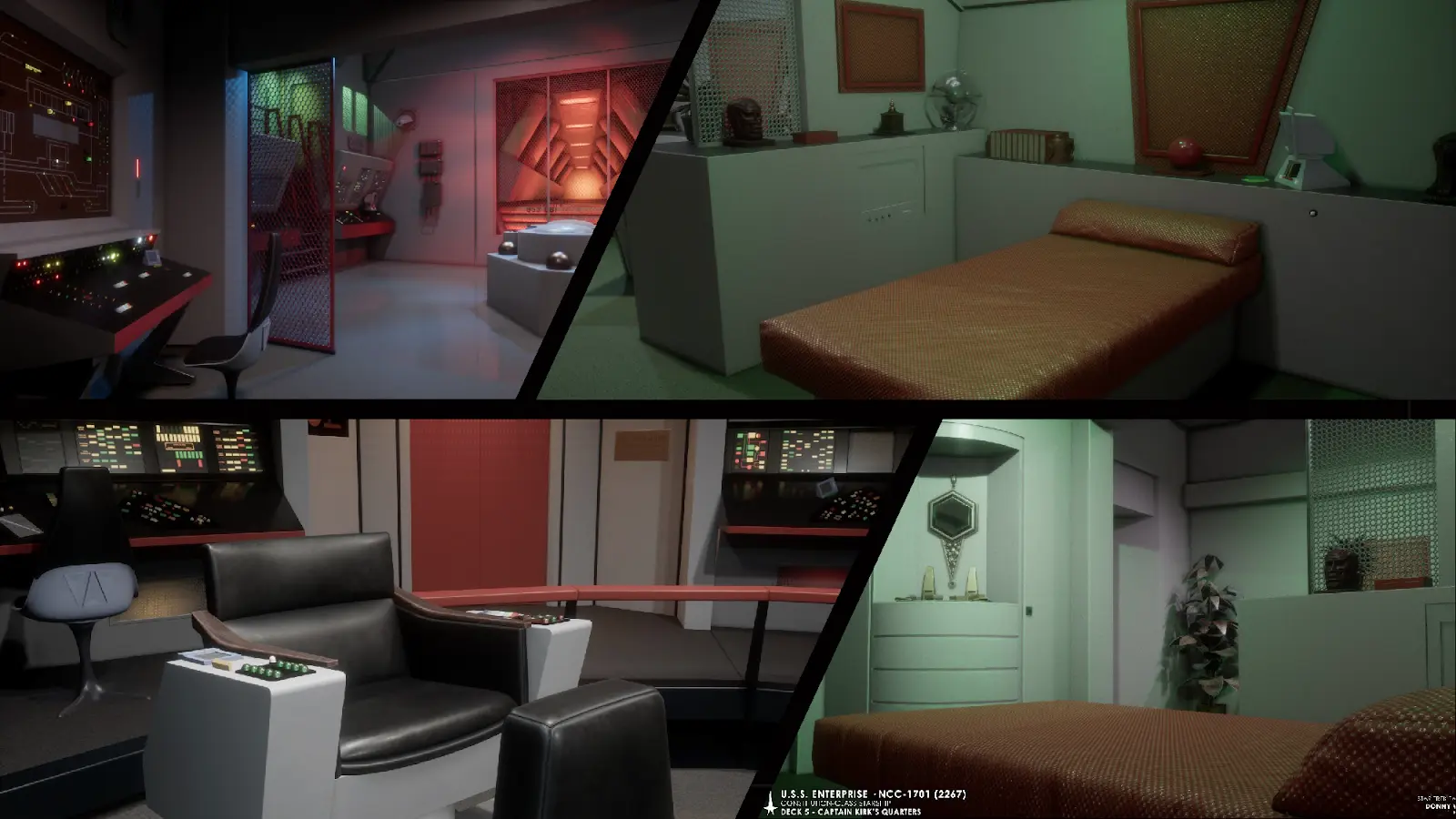
What were some specific challenges you faced? How did you go about solving them?
Spatny: Because our artists come from different backgrounds and industries, they use a variety of workflows and tools. One of my biggest challenges ahead is helping standardize procedures and simplify communication with the international team. That way, we can more easily scale the team and pivot our work to new platforms, using the best practices I’ve learned from the VFX companies I’ve worked with previously.
If you could share one tip about any or multiple Adobe tools you used, what would it be? (e.g. favorite Photoshop/AE/Premiere Pro “hack”)
Spatny: Every week we have a 3-hour art review session with Daren, Mike, and Denise, and sometimes the notes come in hot and fast. We record the sessions and then use Premiere Pro’s transcription tool, Speech to Text, to help gather and summarize the most important points to relay to our art team. One advantage of this over other transcription tools is that it works on my local machine, not in the cloud, so it has no security issues. That’s a huge plus for companies that depend on proprietary IP.
Versiga: When I first started using Adobe Substance Painter, I was excited at the ease of adding things like dirt and edge wear to my models’ textures, so much so that I overused it in my early days. I’ve since learned to make my application of those effects far more subtle. For instance, if I’m modeling a clean Starfleet prop, I’ll add very subtle roughness variation in the form of light scratches, smudges, and fingerprints to make them appear only slightly used and have a level of realism for up-close inspection. On the other hand, I’ll save the heavier rust, metallic edge wear, dirt, and grime effects for the Klingon props and sets.
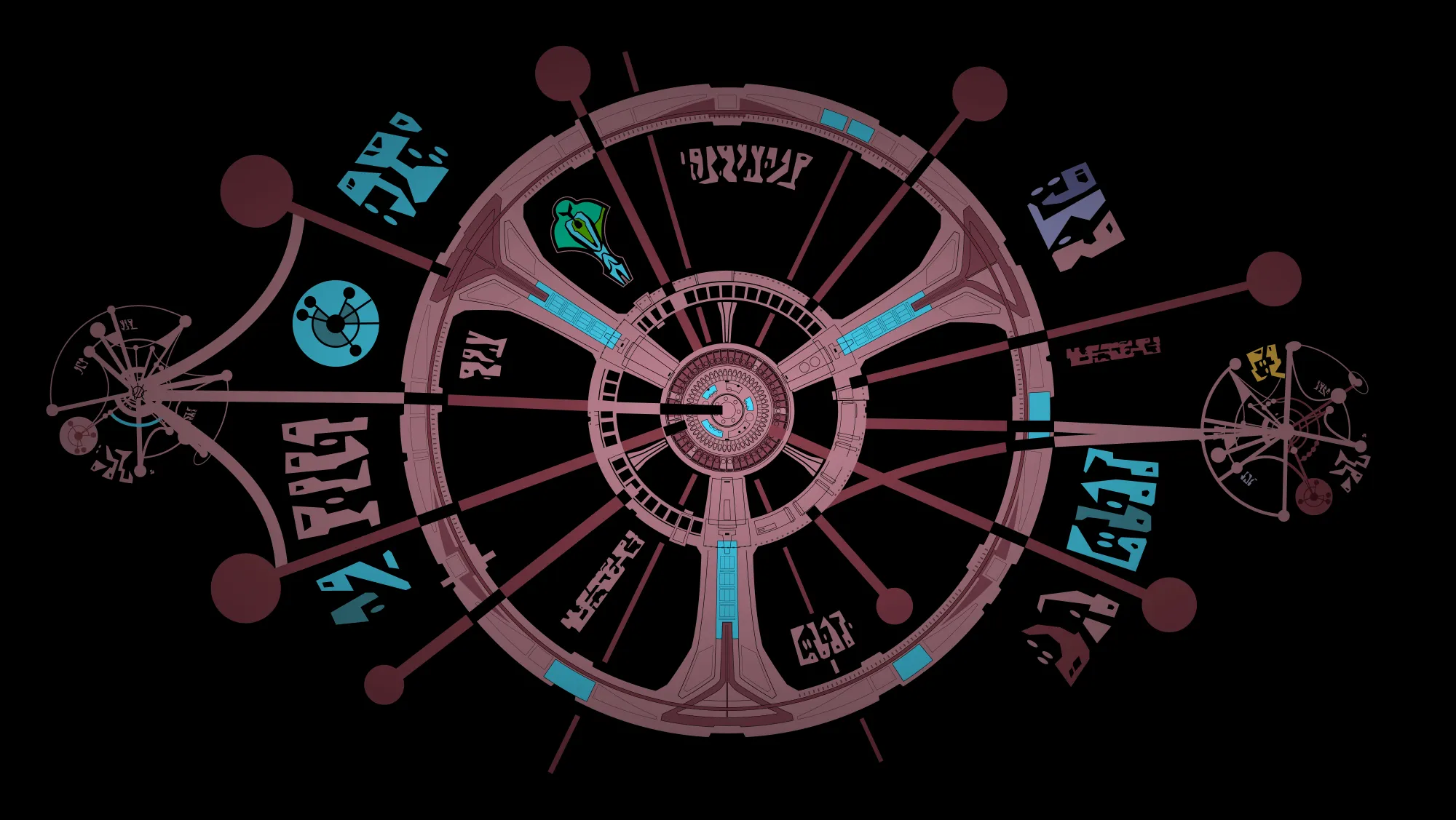
Who is your creative inspiration and why?
Spatny: I keep David Mack’s “Kabuki” comic books in my office. He’s a brilliant artist who sometimes uses wildly different art styles on every page of his comic. It’s a reminder that we always need to be innovating in both design and technical approaches in our industry. You can never be satisfied with doing the same thing the same way twice.
Jarvis: For this project, it’s got to be Michael Okuda. His dedication to the franchise and the consistent design style he brought to the screen graphics made “Star Trek” such a cohesive universe. His work really helped spark my interest in digital art as a boy. Decades later it would be my honor to collaborate with him on “Star Trek: Picard”, and now at The Roddenberry Archive.
What’s the toughest thing you’ve had to face in your career and how did you overcome it? What advice do you have for people aspiring to get into the VFX space?
Jarvis: Creating screen graphics for on-set playback can be a very stressful job. In many ways, it’s more difficult than post VFX because you have to be ready for the day of shooting instead of doing your work after the scene is shot. You’ll get conflicting feedback from multiple departments, day-of requests from set, and ridiculous deadlines. My advice to anyone who wants to get into VFX is to just do it. Don’t wait for someone to hire you, just start making things. The barriers to creating your own content have never been lower, and with free software you can create really polished work without a formal education. Put something out that shows off your style and expertise and don’t be afraid to reach out to people who are doing the kind of work you’d like to be doing.
Share a photo of where you work. What’s your favorite thing about your workspace and why?
Spatny: Working from my home office in L.A. full-time now is a huge improvement over filming on a frozen lake in Canada or at night in pouring rain in Wales. My favorite thing about my home office is my signed photo of the “Star Trek: The Next Generation” cast hanging over my desk.
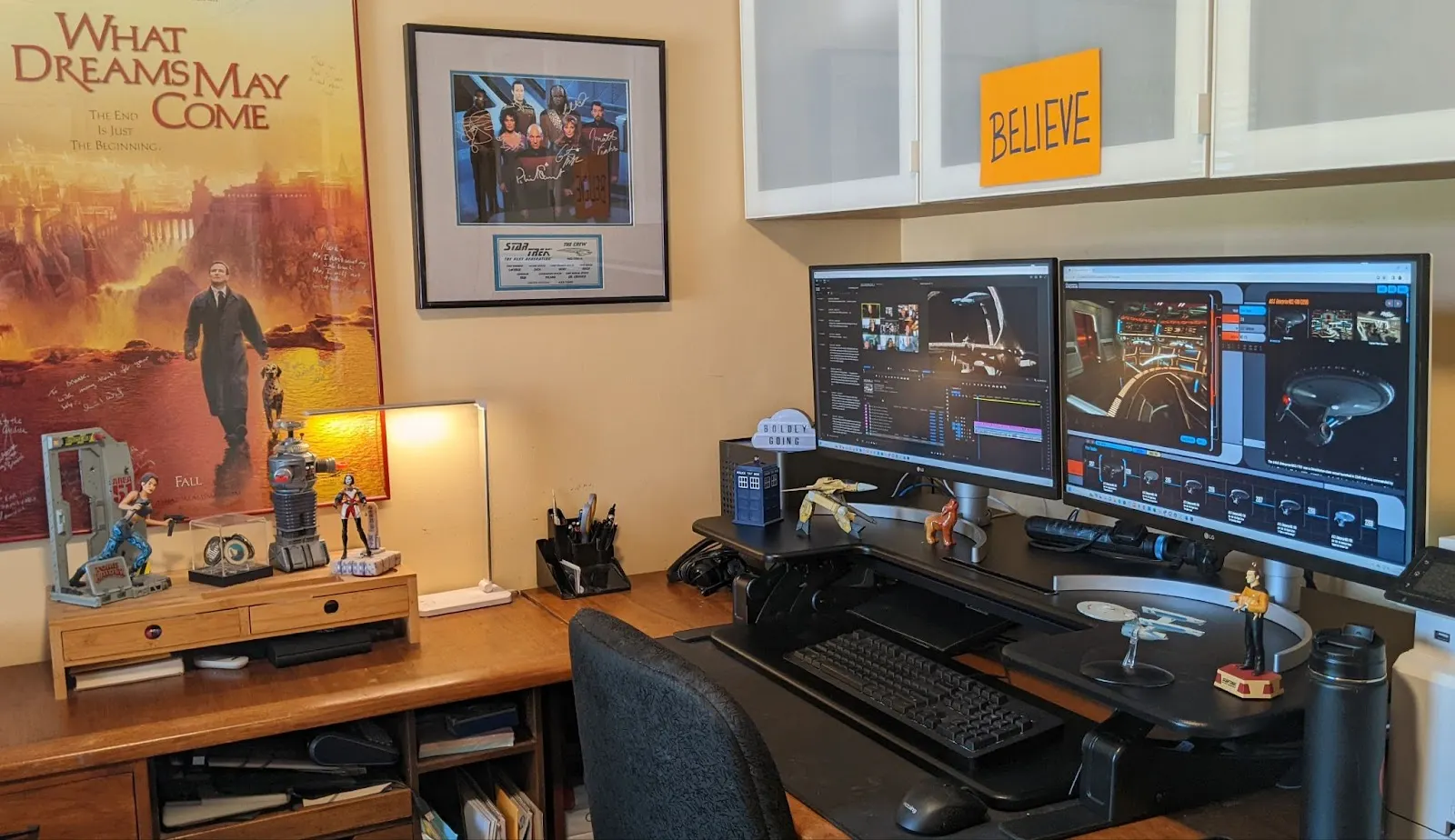
Versiga: My favorite thing about where I work is that it’s from home. Although I miss the social component of working in an office, there’s a very comforting quality to working from home, and I find that I’m able to maintain a greater degree of concentration while I work compared to an office environment.
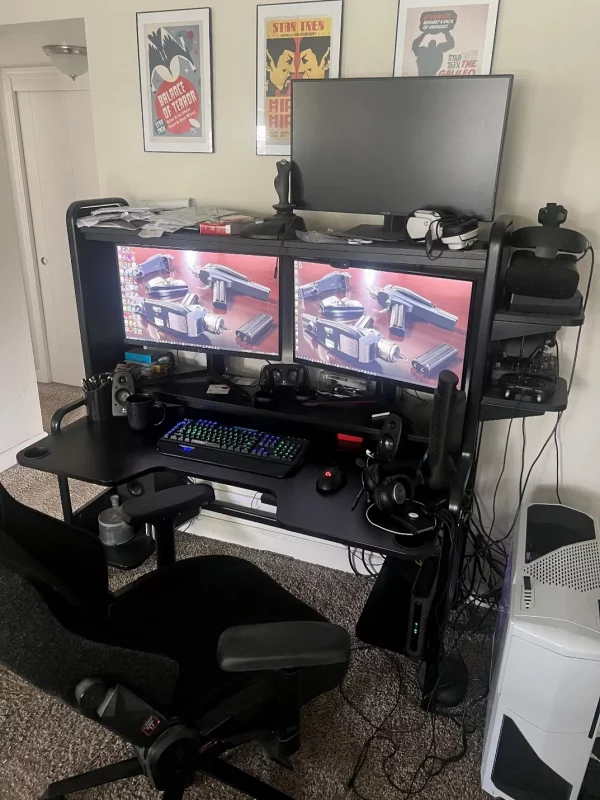
Jarvis: That would of course have to be my framed poster of Christopher Cushman’s iconic “Enterprise D” cutaway poster that hung on my bedroom wall all through grade school.
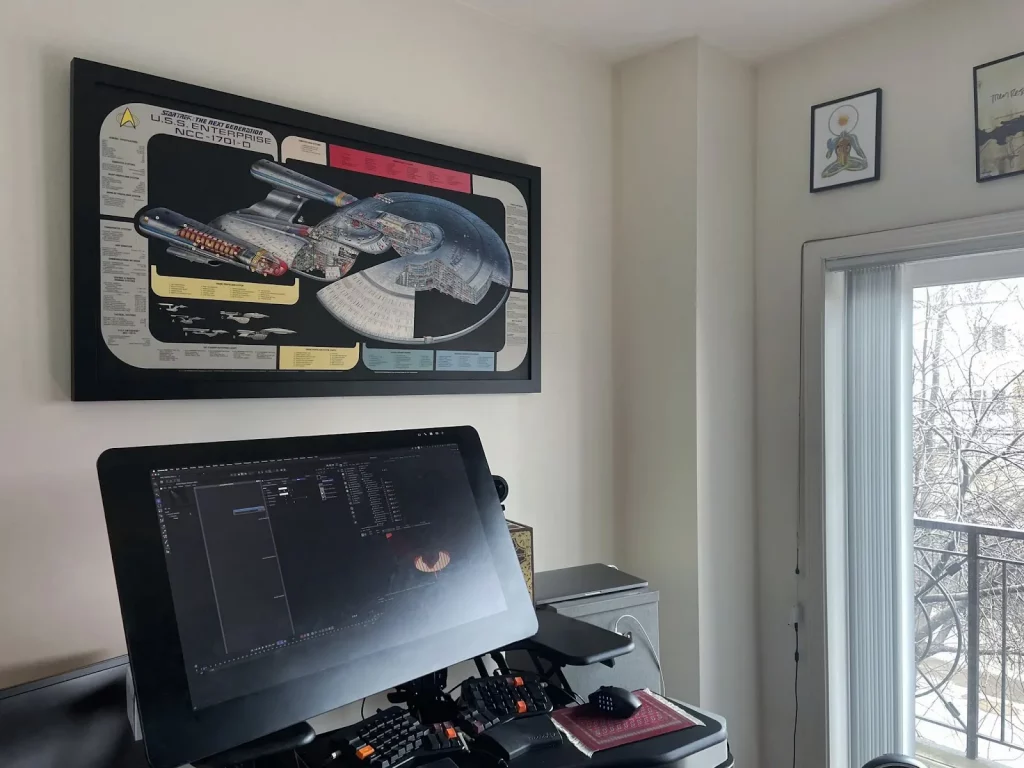

Filmtools
Filmmakers go-to destination for pre-production, production & post production equipment!
Shop Now